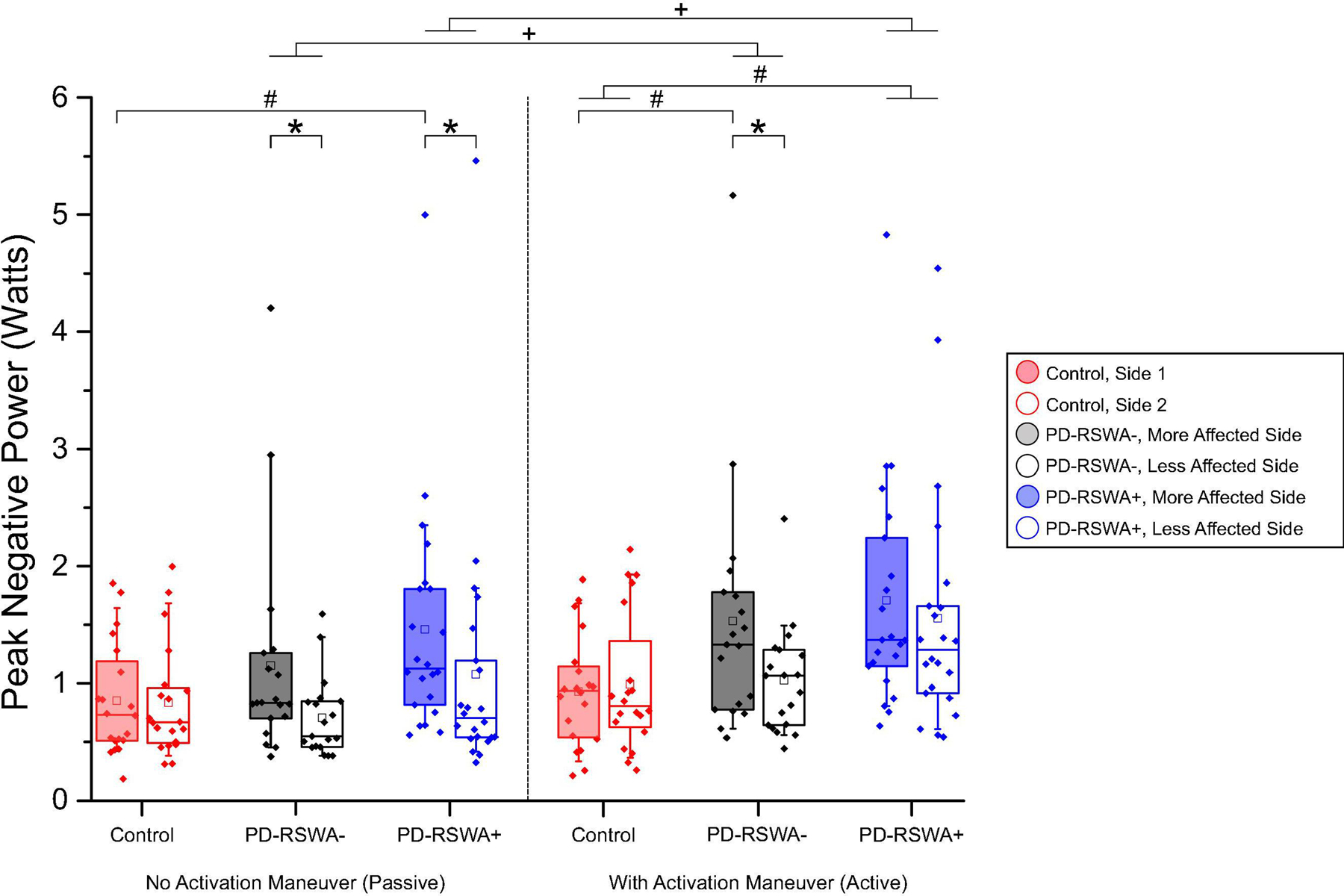Fig. 3:

Peak negative power scores for all conditions. Scores for the more (shaded) and less affected limbs are shown for each group, with scores measured without an activation maneuver on the left and scores measured with an activation maneuver on the right. Left and right limbs in the control group were randomly assigned to Side 1 or Side 2 in order to match the distribution of left and right limbs in the more and less affected categories for participants with Parkinson’s disease. Data presented in the box plots are original, untransformed data. Statistical significance was determined using a mixed ANOVA of log transformed data, with Bonferroni corrected post hoc pairwise comparisons. Significant between group differences (# p < 0.027), within group differences between the more and less affected sides (* p < 0.008), and within group differences between the activation maneuver conditions (+ p < 0.001) are indicated with significance bars. Participants who exhibited rapid eye movement sleep without atonia (RSWA) in at least one muscle group were categorized as Parkinson’s disease with RSWA (PD-RSWA+) while those with no RSWA were categorized as Parkinson’s disease without RSWA (PD-RSWA−). Boxes range from the first to the third quartile, whiskers extend to 90% confidence intervals, median is indicated by a line across the box, and mean is indicated by a square marker. Individual data points are indicated with diamonds.
